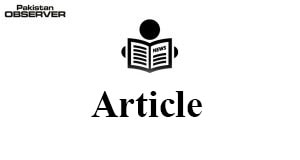A V-shape recovery or a road to W-shape bust
ECONOMIC growth of 3.94% was reached in FY21 after a minus 0.5% slump in FY20.
It has come with positive changes to several economic indicators. Remittances have increased despite Covid-19 to $26.7 billion during Jul-May FY21.
During the same period, exports have also climbed to $22.6 billion. Despite rise in trade deficit, current account balance has shown improvement and is currently in surplus. Large scale manufacturing sector has shown increased activity with 9% YoY growth.
Other than declining cotton production, all major crops have also seen increased production despite missing the overall growth target in agriculture sector by 0.5%.On the fiscal side, tax revenues have increased as well.
To sustain the growth momentum, the government has complimented the expansionary and accommodative monetary policy stance with an expansionary fiscal policy through tax cuts, subsidies, exemptions, enhanced social welfare expenditures and boosting PSDP allocation in the recently announced budget for FY22. Reducing capital gains tax to 12.5% from 15% in stock investments and capital value tax to 1.25% from 1.5% on stock trading will help in sustaining the increased trading activity at the bourse.
Low policy rate at 7% together with removal of WHT on banking transactions also bodes well for banking sector consumers.
A reduced sales tax on small cars will drive growth in automobiles sector as well as provide business to banking and insurance sector.
However, some structural weaknesses may remain the same. The share of current expenditure has risen while there is decline in development expenditure as a percent of GDP. Interest payments will alone eat up 52.7% of the tax revenue in Budget 2021-22.
Despite lower interest rates in FY21, mark up payments as percent of GDP have risen and with increase in interest rates expected in FY22, there will be more pressure on the fiscal side.
On the fiscal front, the burden of tax on manufacturing is still almost twice as much as its share in GDP while agriculture and some services are having lesser share in tax as compared to their share in GDP.
In direct taxes, there is more reliance on big corporations, salaried persons and withholding taxes.
There is still heavy reliance on sales tax which contributes 40% to total taxes and about 65% in total indirect taxes.
The 24% growth target in revenues in FY22 is more reliant on indirect taxes (25% expected growth in FY22) than direct taxes (7% expected growth in FY22).
There was considerable growth in large scale manufacturing sector including automobiles, textiles and cement.
However, electronics and light engineering sector saw decline. Much of the turnaround was attributed to a once-in-a-while lavish package to the construction industry.
Else, the monetary side stimulants could not bring the similar fruits to the SMEs and investment to GDP ratio declined to 15.1% from 15.3% YoY.The share of textile in country’s exports has risen, but for the third year in sequence, cotton production is declining and we have become net importers of sugar, wheat and cotton.
Thus, there is need for easing the woes of agriculture sector with decrease in levies in input like seeds, pesticides, fertilizers, tractors and tube wells, for instance.
There is also need for knowledge sharing with farmers in advance to combat any pest attacks and weather changes. Despite spending on infrastructure, there are still huge losses in supply chain.
There is need for investment in warehousing and storage facilities besides focusing on road infrastructure alone. At least in food products, we need to be self-sufficient with an ever growing population.
In industry as well, we could not capitalize on pharmaceutical exports as much as we could. ICT exports have crossed $2 billion and it is hoped that they can drive services exports further. India’s ICT exports are at $136 highlighting the potential of this industry.
With US exiting Afghanistan, our exports of food products and cement will also see challenges.Value addition and quality assurance are vital in enhancing the value of our exports.
For the large part of its tenure, the government had emphasized on achieving growth in quantity of exports.
But, quantity alone does not fetch us required dollars to meet the impending foreign debt repayments and manage pressure on import bill if oil prices surge in the coming year.
As global demand increases amidst efforts by governments all over the world to boost growth and recovery, we need to diversify export base, enhance value addition and seek alternate energy resources.
On the whole, 4.8% targeted growth in FY22 is achievable, but it needs to be inclusive, employment creating, broad based and sustainable.
People in lower and middle income classes have suffered from the rise in prices of essential items, cost of utilities and stagnant real wages.
Going forward, it is hoped that the budgeted allocations will be effectively and efficiently utilized transparently. This is as much important as the announcement of allocation itself.
If vaccination targets are achieved, lockdowns are avoided, coordination is improved between federal and provincial governments, oil prices do not rise exorbitantly, remittances and exports remain on their higher path and there is stability in accommodative monetary policy and expansionary fiscal policy stance, then it is likely that the V-shaped recovery will not result in a W-shape boom-bust cycle we are quite familiar with.
—The author holds PhD in Economics from National University of Malaysia.










